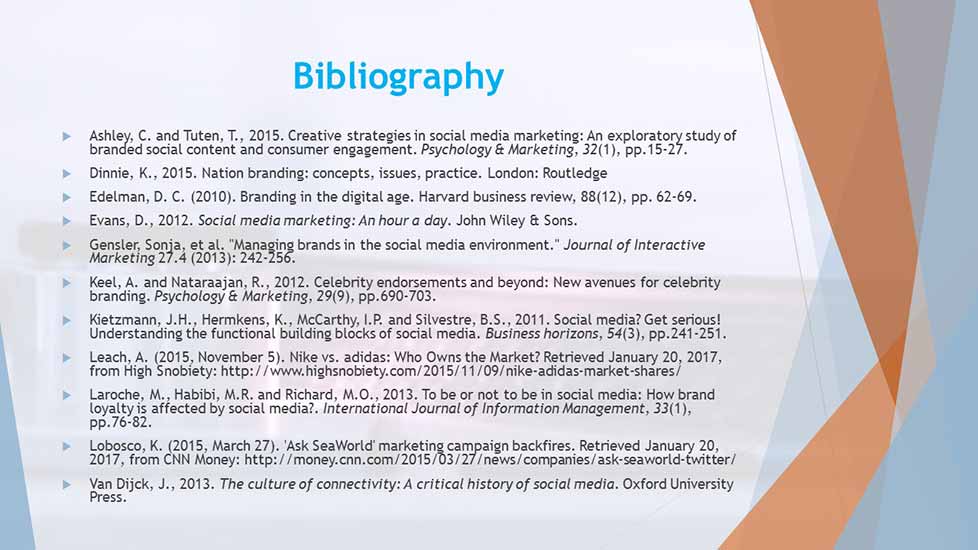Sample Undergraduate 2:1 Business Powerpoint
This sample business PowerPoint was written by one of our expert writers, to give you a taste of the work we produce.
-
Slide 1
-
Slide 2
-
Slide 3
-
Slide 4
-
Slide 5
-
Slide 6
-
Slide 7
-
Slide 8
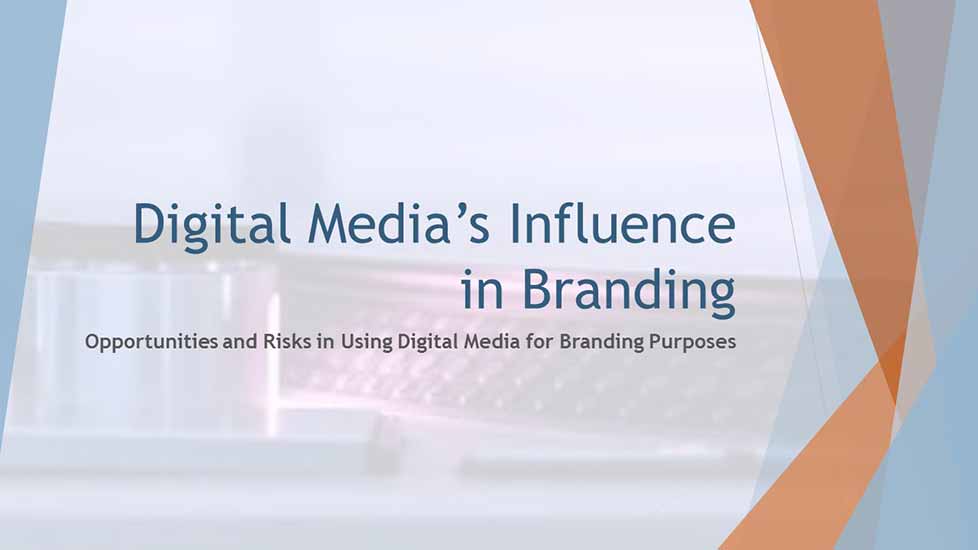
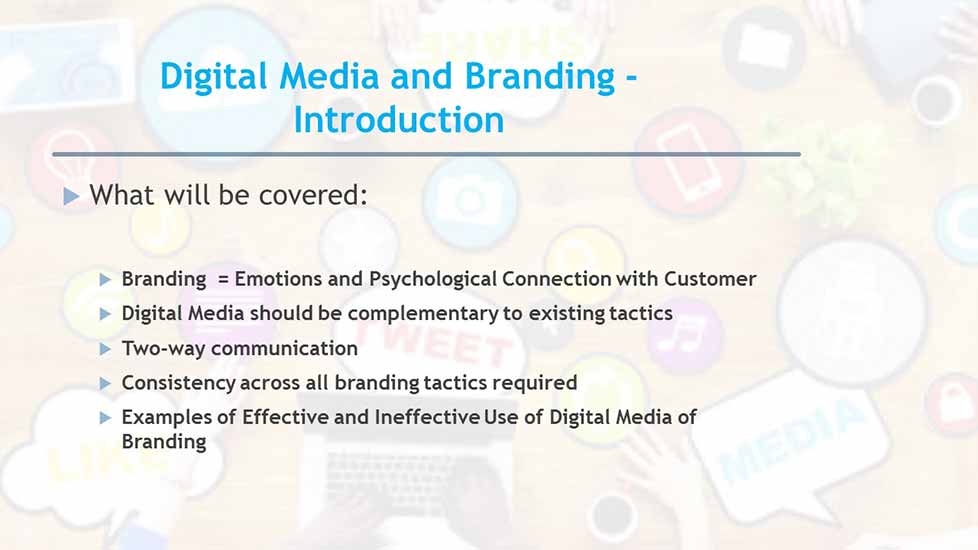
Slide Notes
This presentation will cover a number of aspects which will reveal digital media's influence in Branding, including, but not limited to:
- Effective branding as a strategy in order to appeal to emotions and create psychological connections between customers and products/services of a company.
- Digital Media as a complement and enhancement of existing tactics of branding through effective strategic integration of print, TV, phone and the platforms used by Web 2.0
- Customers' expectations for brands to engage in two-way communication using digital media.
- And, how consistency in the digital and physical branding is crucial to success.
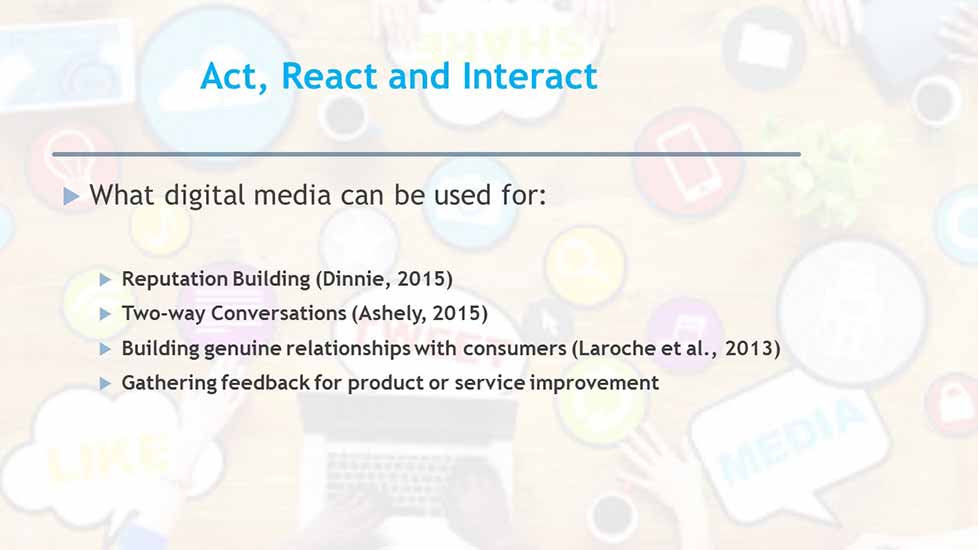
Slide Notes
In order to ensure that the potential benefits of social media are maximized, companies need consistency in their branding efforts across all digital platforms used. Brands need to make sure they use the same messages, graphics and tone of voice across all means of promotion, including social media, website, TV, print media, brick and mortar stores, in order to avoid confusion or lack of recognition. (Gensler et al., 2013)
Brands need to set the expectations, but also meet them as far as frequency of social media interactions and campaigns are concerned (Evans, 2012). The marketing team needs to decide how often they will Tweet, post on Facebook or Instagram and maintain this frequency of the postings in order to ensure that customers know what to expect from them.
Over-reliance on Digital Media can also be harmful for companies, leading to brand erosion, if brands were previously recognised for other traditional branding activities, such as TV, radio or print advertising (Van Dijck, 2013). Whilst Social Media has become necessary for most companies in order to ensure they remain relevant to their audience and also to reach new customers, this should not replace the existing Marketing tactics employed by the brand beforehand.
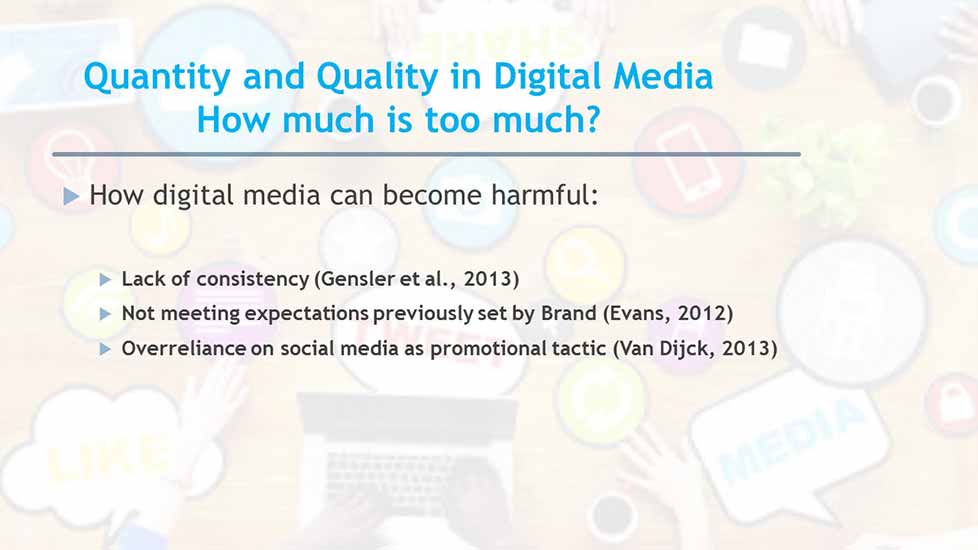
Slide Notes
In order to ensure that the potential benefits of social media are maximized, companies need consistency in their branding efforts across all digital platforms used. Brands need to make sure they use the same messages, graphics and tone of voice across all means of promotion, including social media, website, TV, print media, brick and mortar stores, in order to avoid confusion or lack of recognition. (Gensler et al., 2013)
Brands need to set the expectations, but also meet them as far as frequency of social media interactions and campaigns are concerned (Evans, 2012). The marketing team needs to decide how often they will Tweet, post on Facebook or Instagram and maintain this frequency of the postings in order to ensure that customers know what to expect from them.
Over-reliance on Digital Media can also be harmful for companies, leading to brand erosion, if brands were previously recognised for other traditional branding activities, such as TV, radio or print advertising (Van Dijck, 2013). Whilst Social Media has become necessary for most companies in order to ensure they remain relevant to their audience and also to reach new customers, this should not replace the existing Marketing tactics employed by the brand beforehand.
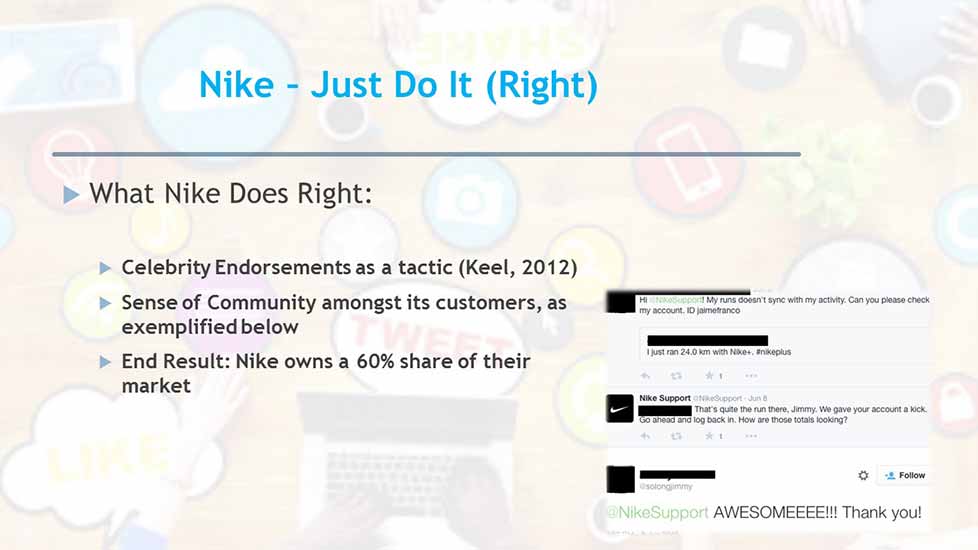
Slide Notes
The sports apparel company Nike uses digital media to showcase their branding strategy though engaging content and celebrity endorsements, which remains a very alluring tactic in the digital context also (Keel, 2012). Nike has a large number of adverts promoted through YouTube and social media platforms which feature well known celebrities from the sports world and beyond, including actors and models (Edelman, 2010).
The company has its own social media platform Nike+, with links to other digital platforms, where users can share their fitness progress, ask other users for advice, etc. This helps create a sense of community amongst its clients, adding to the value that Nike provides to its customers (Evans, 2012)
Nike stands as proof that digital media can help companies achieve success, as it is the most successful spots apparel company, owning 60% of the sports apparel market, outperforming its competitor Adidas in a staggering manner considering the fact that in 2000 they had a similar performance in the market (Leach, 2015).
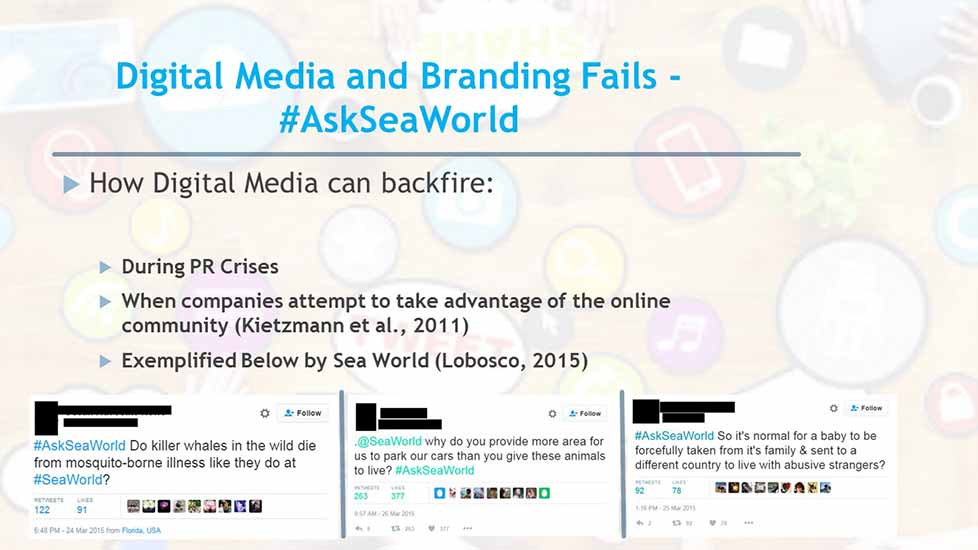
Slide Notes
Digital media can become dangerous for brands when the company is facing a PR crisis, as news travels faster through social media platforms. Digital media can become the vehicle which leads to rapid decline of a brand.
In addition to providing companies with a platform to communicate to their consumers, social media also empowers the consumer to become more critical, demand more transparency and honesty from brands. If brands are using Digital Media for promotional purposes only, without giving anything back to the consumers who engage with their brand online, this could eventually backfire (Kietzmann et al., 2011).
Brands need to ask themselves whether digital media is a friend or a foe in certain situations and avoid furthering a PR crisis. Sea World attempted to improve their image after a PR disaster in 2013 by opening up to questions from the public on Twitter through the use of the #AskSeaWorld hashtag. This backfired as consumers took to Twitter to voice their dissatisfaction with the actions of the brand which harmed killer whales (Lobosco, 2015).
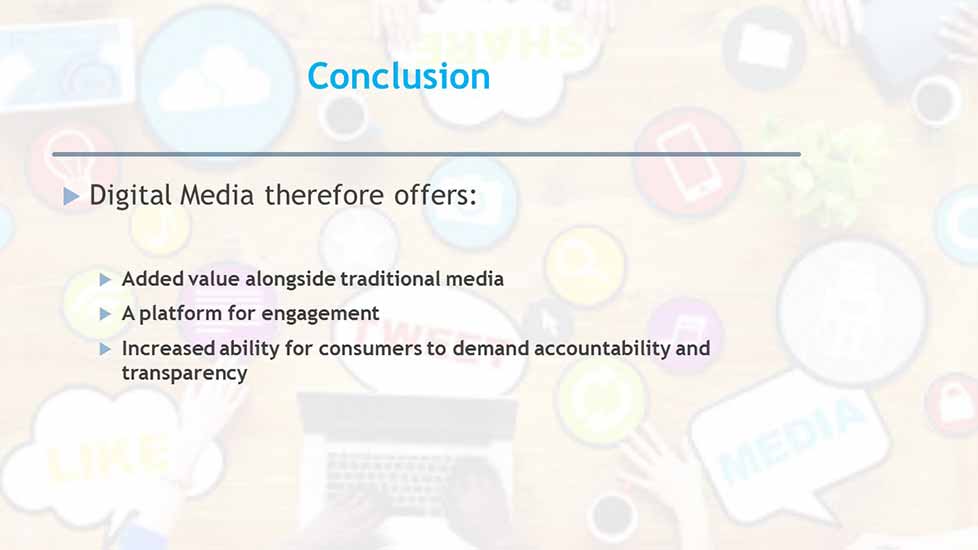
Slide Notes
To conclude:
Digital media can be beneficial, but only if brands do not lose sight of the value of traditional media advertising. Social media, websites and other components of digital media should add value to the existing strategy of companies and aid companies' branding, but it should not become a purpose in itself.
Digital media provides the platform for brands to engage with customers, which contributes to the improvement of a brand image.
Digital media offers many opportunities for interaction with clients, but also risks associated with increased need for accountability and transparency.
Thank you for listening to our presentation, does anyone have any questions?
